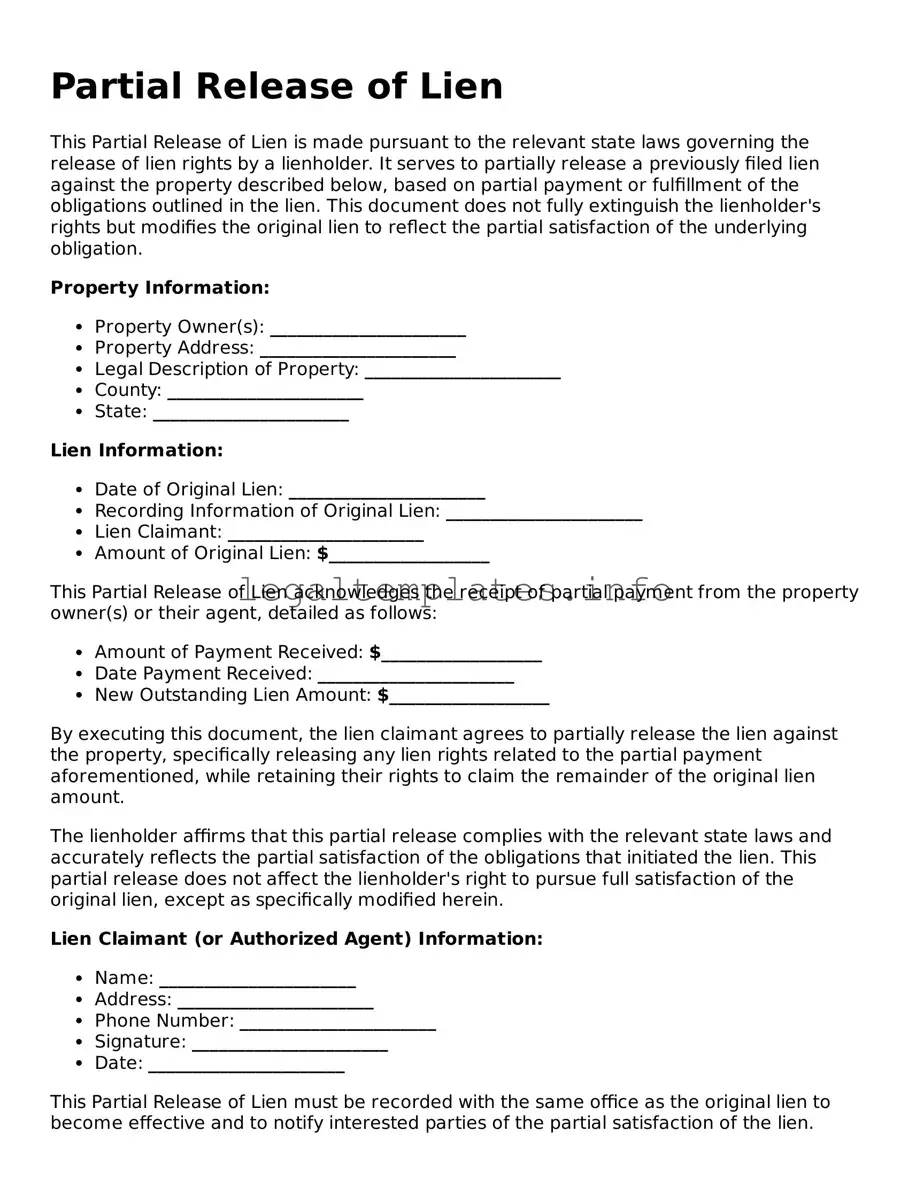What is a Partial Release of Lien form?
A Partial Release of Lien form is a legal document used by a lienholder to release a portion of the property from a previously filed lien but keeps the lien effective for the remaining part of the property. This is common in scenarios where a property owner makes a partial payment on the debt that led to the lien's placement, and the creditor agrees to release part of the property as a result.
When would one need to use a Partial Release of Lien form?
This form is typically used during the course of repayment on a debt that has resulted in a lien against property owned by the debtor. For example, if a property owner is paying off debt in installments, they might negotiate with the creditor to have parts of the property released from the lien as payments are made, allowing for the sale or refinancing of that portion of the property.
Who is authorized to file a Partial Release of Lien form?
The lienholder, which could be an individual, a financial institution, or a contractor who has placed a lien on the property due to unpaid debts, is the only party authorized to file a Partial Release of Lien form. This act usually requires the lienholder's signature and might also need to be notarized to ensure its validity.
What information is required to complete a Partial Release of Lien form?
To complete a Partial Release of Lien form, detailed information about the original lien, the property, the lienholder, and the debtor is needed. This includes the date of the original lien, a description of the property part being released, the names and addresses of both the lienholder and the debtor, and possibly the reason for the partial release. It's also common to include the payment amount that led to the partial release.
How does filing a Partial Release of Lien form affect the property's title?
Filing a Partial Release of Lien form effectively removes the lien from a portion of the property’s title, making it clearer and potentially more attractive to buyers or lenders. However, it's important to note that while part of the property is freed from the lien, the rest remains under lien until the full debt is repaid or another agreement is reached.
Is it necessary to have a lawyer to file a Partial Release of Lien form?
While it's not legally required to have a lawyer to file a Partial Release of Lien form, consulting with one can be very beneficial. A lawyer can help ensure that all legal requirements are met and that the form is filed correctly, potentially avoiding complications or delays. Additionally, a lawyer can offer advice on negotiating partial releases and protect your interests throughout the process.
